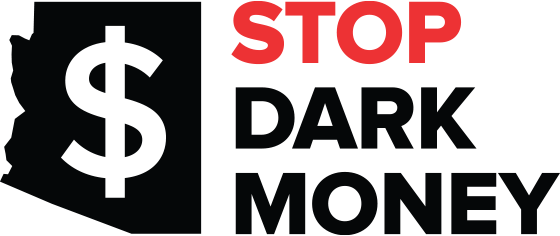The Voters’ Right to Know Act - Frequently Asked Questions
Why do we need the Voters’ Right to Know Act?
To ensure that our democracy lives up to the promise of self-government, voters must have the information they need to evaluate candidates for public office and to keep them accountable once they’re elected. In fact, the Founders gave us the First Amendment to ensure that “we the people” have the information we need to engage in robust debate when choosing who will represent us, and in holding their feet to the fire once they’re in office.
But when wealthy special interests outspend everyone else to elect the candidates of their choice and hide what they’re doing behind shell corporations and innocent-sounding organizations, the promise of the First Amendment is gone. Unfortunately, ever since the Supreme Court opened the door in Citizens United to unlimited corporate campaign spending, the use of secret spending or “dark money” to pay for campaign ads has increased dramatically — with less and less critical information flowing to ordinary voters.
Under existing law, when people or corporations honestly buy campaign ads, they must put their own name on their ads. But when wealthy special interests play games and transfer their money to other entities that in turn buy the ads, they can usually avoid disclosing what they’re up to.
This initiative would put an end to this kind of deception, restore balance to the system, and give the people the information they need to make informed choices. This is a disclosure law. It creates transparency; it doesn’t pick winners and losers or limit what people can spend.
What does The Voters’ Right to Know Act do?
What extra information would the law provide the public?
What is the basic structure of The Voters’ Right to Know Act?
What kind of notice does a spender need to give its donors if it wants to use the money it receives for campaign ads?
What if a spender raises money without having included the required notice to its donors, but then later decides it wants to run election ads with that money?
What does a business have to do if it wants to use its profits to give to a group that makes some campaign expenditures?
If an individual wants to give $100,000 of his or her own money to a covered person, will that individual have to create transfer records and file reports?
How do The Voters’ Right to Know Act’s tracing requirements actually work?
Here’s an example: Americans for Security, a section 501(c)(4) organization, receives $1 million in traceable monies, and $50,000 in non-traceable monies. When it solicits this money, it notifies potential donors that their donations may be used for campaign media spending unless they opt out. The monies come from the following sources:
| Direct donors to Americans for Security | Donation amount | Type of donor | Source of donors’ funds |
| Moms for America | $300,000 | 501(c)(4) corporation | Susan Martinez contributed 70% of Moms for America’s monies. |
| Draylock | $200,000 | LLC | Crainlock, an LLC, contributed 90% of Draylock’s monies. William Blalock, an individual, gave Crainlock 80% of its monies. (Blalock used personal monies.) |
| Dads for America | $170,000 | 501(c)(4) corporation | All of its donors, except one, each gave less than $2,500. One of its donors, Joan Verdini, gave $30,000. |
| Acme, Inc. | $130,000 | For-profit corporation | Contribution came from Acme’s business profits |
| Our Best Days Ahead | $100,000 | Numerous individuals | Monies of donors who each gave less than $5,000 each |
| Maeve Murphy | $25,000 | Foreign national (Ireland) | Personal monies |
| Louis Garland | $25,000 | American citizen | He opted out of his donation being used for campaign spending. |
| Total contributions designated for campaign spending | $1,000,000 | (excludes donations from foreign national and opt-out individual) |
Acme is donating its own business income, so it does not need to maintain transfer records or file any reports with the government. It merely has to tell Americans for Security that the source of its donation is its own business income.
Similarly, the individual donors (whose collective giving totaled $100,000) each gave less than $5,000, so they don’t need to provide Americans for Security with any information about the source of their donations.
The money from Moms for America, Draylock, Dads for America, and Our Best Days Ahead all came from other original sources, and these entities are all major donors, i.e., have given over $5,000 each. These entities don’t need to file any reports with the government, but they all need to tell Americans for Security the original sources of their contributions, and any intermediaries who transferred the money before it got to them.
The contribution from Maeve Murphy cannot be designated as traceable monies because she is a foreign national and is therefore prohibited under federal law from making a donation in connection with a federal, state, or local election.
The contribution from Louis Garland cannot be designated as traceable monies because he opted out of having his money used for campaign media spending. As a result, Louis Garland’s donation will not be used for campaign media spending in Arizona, and he accordingly will not be identified in Americans for Security’s reports required by The Voters’ Right to Know Act.
